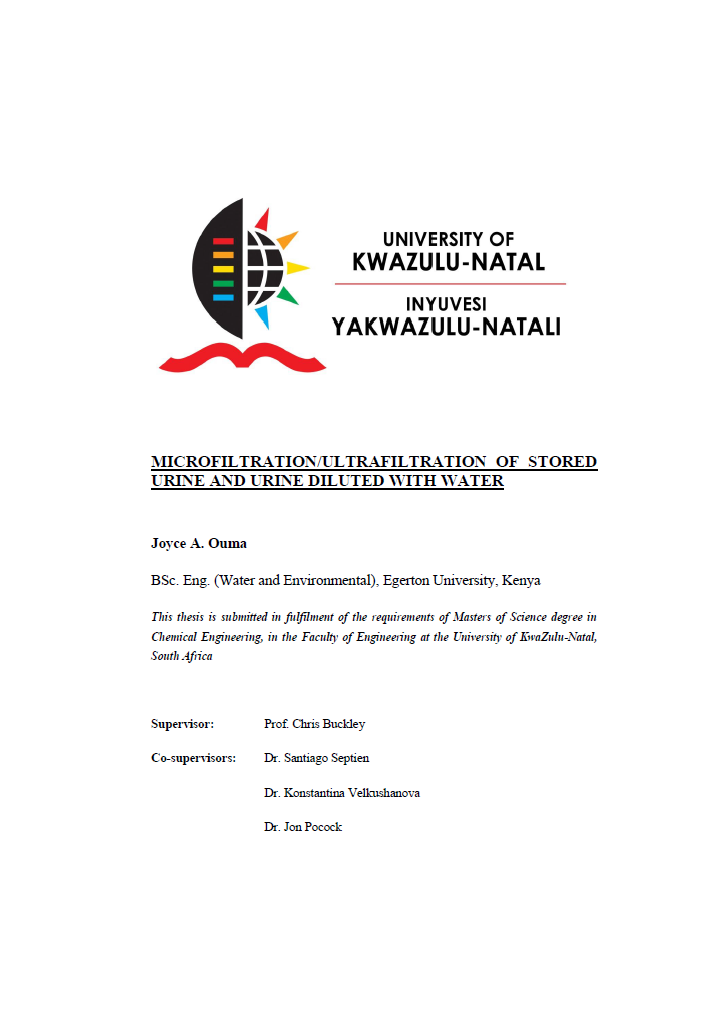Microfiltration/Ultrafiltration of stored Urine and Urine Diluted with Water Master thesis from the Pollution Research Group, at the University of KwaZulu-Natal (Durban, South Africa) Ouma, J.A. (2016)
Bibliographic information
Ouma, J.A. (2016). Microfiltration/Ultrafiltration of stored Urine and Urine Diluted with Water Master thesis from the Pollution Research Group, at the University of KwaZulu-Natal (Durban, South Africa)
Filter / Tags
UrineCase studies in other formatsEnglish
Downloads

Published in: 2016
Pages: 125
Publisher:
Author(s):
Ouma, J.A.
Uploaded by:
UKZN
University of KwaZulu-Natal
Location of library entry:
